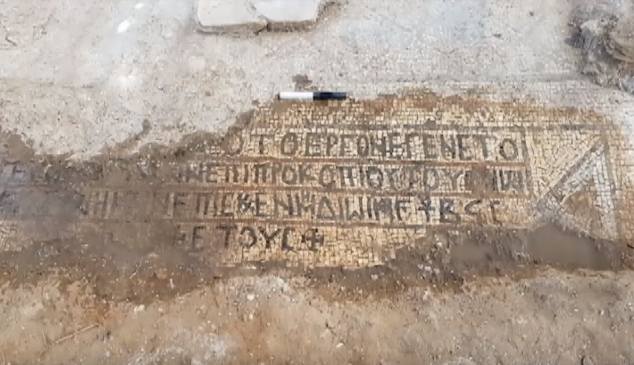Archaeologists found the ruins of a Georgian church or
monastery during the excavations on the Mediterranean coast of Israel and
assume that it is about 1,500 years old, says the Department of Antiquities of Israel.
During the excavations of the large city of
Ashdod-Yam, which prospered on that territory during the Byzantine time, the scientists found a
piece of the mosaic floor with an inscription. It has writings in the Greek language
but with the help of an ancient Georgian chronological system, which led the scientists
not only to identify the age of the building but also understand who it
belonged to.
Dr. Lea Di Segni, a scientist from the Jewish
Institute of Jerusalem, decoded the “third indiction, year 292” mentioned in
the inscription as the year 539 B.C.
“This is the earliest known to us case of using the
Georgian calendar in Erez-Israel (historical Land of Israel), - says Dr. Di
Segni.
The scientists say that they know a lot about the
Georgian buildings of the same period, located tens of kilometers away in the
East, in Jerusalem and its suburbs. However, there was no such discoveries on
the Mediterranean coast before.
“According to historical sources, Peter the Iverean, a
well-known Georgian prince and bishop, spent here the last years of his life. It
seems that now we have found a true evidence of the influence he made on that
Byzantine city”, - writes the Israel Department of Antiquites.
Peter the Iberian, who lived in the 5th century,
was the founder of the first Georgian monastery in Bethlehem. According to the
Department’s press release, archaeologists consider it symbolic that the
remains of the city were found near the city of Ashdod, where as they say the
largest community of Jews who came from the modern-day Georgia lives nowadays.
Source: http://www.bogoslov.ru/text/5622175/index.html

















CONVERSATION